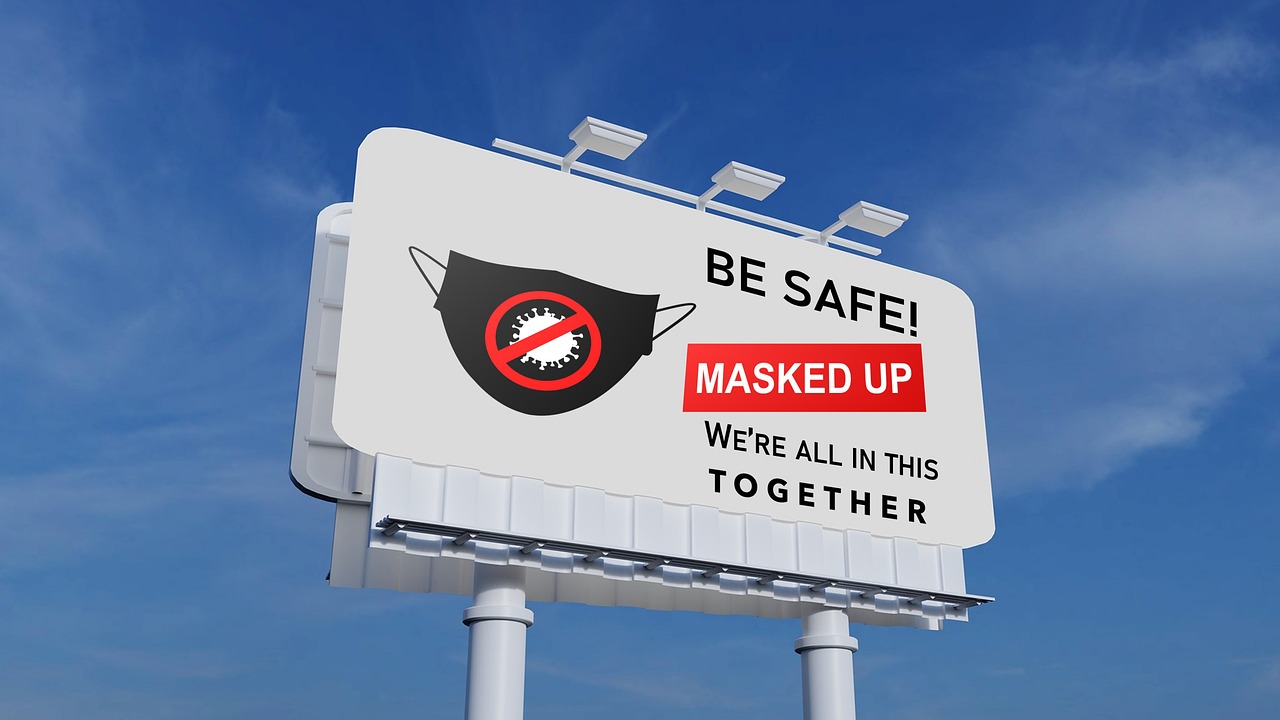Unveiling the Secret of Safety: Understanding Human Behavior
In our fast-paced world, where risks lurk around every corner, the concept of safety often feels like a puzzle waiting to be solved. Have you ever wondered why some individuals seem to instinctively prioritize safety while others take reckless risks? The answer lies in the intricate relationship between human behavior and safety practices. Understanding this relationship is not just a matter of curiosity; it's essential for creating environments where safety is not only a priority but a culture. By delving into the psychological factors that influence decision-making, we can uncover the secrets that drive safe behaviors and enhance our collective well-being.
At its core, safety is influenced by a myriad of psychological principles. These principles shape how individuals perceive risks, respond to potential dangers, and ultimately make decisions that could impact their safety and the safety of those around them. For instance, consider the classic scenario of a workplace environment: some employees might consistently wear their personal protective equipment (PPE), while others may neglect it. This disparity often stems from underlying psychological factors, such as risk perception, past experiences, and social influences. By fostering a deeper understanding of these elements, organizations can cultivate a culture that prioritizes safety and encourages proactive behavior among employees.
Moreover, the human brain is wired to respond to various stimuli, and safety is no exception. Our instincts, shaped by evolution, often dictate our reactions to perceived threats. This instinctual response can sometimes lead to irrational decisions, particularly in high-pressure situations. For example, in an emergency, a person might freeze or act impulsively rather than following established safety protocols. Recognizing these psychological triggers is crucial for developing effective safety strategies that resonate with employees on a personal level.
As we explore the journey of understanding human behavior in the context of safety, it becomes clear that the path is paved with opportunities for growth and improvement. Organizations that take the time to invest in understanding these psychological dynamics will not only enhance safety practices but also foster a more engaged and responsible workforce. So, how can we harness this knowledge to create safer environments? The answer lies in the implementation of comprehensive safety programs that address both the psychological and practical aspects of safety.
In conclusion, the journey to safety is not solely about rules and regulations; it's about understanding the human psyche. By unveiling the secrets of human behavior, we can transform safety from a mere obligation into a shared value. As we move forward, let’s remember that safety is not just a destination but a continuous journey that requires our collective commitment and understanding.
- What is the role of psychology in workplace safety?
Psychology influences how employees perceive risks and make decisions regarding safety practices. Understanding these factors can help organizations foster a culture of safety.
- How can organizations promote safe behaviors among employees?
By implementing effective safety training programs, encouraging open communication, and recognizing positive behaviors, organizations can promote a culture of safety.
- What are some common psychological barriers to safety?
Common barriers include complacency, overconfidence, and a lack of awareness about potential risks. Addressing these barriers is crucial for improving safety outcomes.

The Psychology of Safety
When we talk about safety, it’s easy to think of hard hats, safety goggles, and warning signs. But what really drives our behavior around safety? The answer lies deep within the psychological principles that shape our actions. Understanding these principles is crucial for organizations that aim to create a culture of safety. Have you ever wondered why some people take safety seriously while others seem to disregard it? This discrepancy often stems from individual perceptions, past experiences, and social influences.
At the heart of safety psychology is the concept of risk perception. This refers to how individuals assess the potential dangers in their environment. For instance, someone who has witnessed a workplace accident may become hyper-aware of safety protocols, while another who has never faced such a scenario might underestimate risks. This variance highlights the importance of fostering a shared understanding of safety among team members. But how can organizations achieve this?
One effective strategy is through open communication. By encouraging employees to share their experiences and perceptions regarding safety, organizations can bridge the gap between different viewpoints. Imagine a workplace where everyone feels comfortable discussing their safety concerns—this not only enhances awareness but also cultivates a sense of collective responsibility. Additionally, integrating psychological insights into safety training can help employees recognize their own biases and improve their decision-making processes.
Another fascinating aspect of the psychology of safety is the influence of emotional factors. Emotions such as fear, anxiety, and even excitement can significantly impact how individuals respond to safety protocols. For example, fear of reprimand may lead some employees to adhere strictly to safety measures, while others may feel invincible and take unnecessary risks. Organizations should strive to create an environment where employees feel safe to express their emotions and concerns. By doing so, they can foster a culture that not only prioritizes safety but also supports mental well-being.
| Emotional Factors | Impact on Safety Behavior |
|---|---|
| Fear of Accidents | Increases adherence to safety protocols |
| Complacency | Leads to risky behaviors |
| Peer Support | Encourages safe practices |
Furthermore, the concept of cognitive biases plays a significant role in safety behavior. Biases such as optimism bias can cause individuals to believe that accidents won’t happen to them, leading to a lack of precaution. Recognizing these biases is the first step toward mitigating their effects. Organizations can incorporate strategies like scenario-based training to help employees visualize the consequences of unsafe behaviors, effectively countering these biases.
In conclusion, understanding the psychology of safety is not just about knowing the rules; it’s about comprehending the underlying factors that influence behavior. By cultivating an environment that promotes open dialogue, emotional support, and awareness of cognitive biases, organizations can significantly enhance their safety culture. So, next time you think about safety, remember that it’s not just about the equipment; it’s about the people and the psychology that drives their actions.
- What is risk perception? Risk perception refers to how individuals assess the potential dangers in their environment, influenced by past experiences and social factors.
- How can organizations improve safety culture? By fostering open communication, encouraging emotional expression, and addressing cognitive biases, organizations can enhance their safety culture.
- Why is emotional support important for safety? Emotional support helps employees feel safe to express concerns, leading to a more proactive approach to safety.

Behavioral Safety Programs
When it comes to creating a safe workplace, play a crucial role. These programs are not just about enforcing rules; they focus on the human element of safety. By understanding how people think and behave, organizations can implement strategies that encourage safer practices. The essence of these programs lies in the observation of behaviors, providing constructive feedback, and utilizing positive reinforcement to cultivate a culture of safety. Imagine a garden where each plant represents an employee; without proper care and attention, even the strongest plants can wither. Similarly, without ongoing support and acknowledgment, safe behaviors can fade away.
One of the most effective ways to promote safety is through regular observation. When supervisors and peers actively watch for safe and unsafe practices, it not only helps identify areas for improvement but also sends a clear message that safety is a shared responsibility. This practice fosters a sense of accountability among employees, encouraging them to look out for one another. Furthermore, feedback is essential in this process. Constructive feedback allows individuals to understand the impact of their actions, reinforcing positive behaviors while gently correcting unsafe ones.
Moreover, the concept of positive reinforcement cannot be overstated. Recognizing and rewarding safe behaviors can create a ripple effect throughout the organization. For instance, when employees are acknowledged for following safety protocols, it motivates others to do the same. This creates an environment where safety is not just a requirement but a valued aspect of the workplace culture. To illustrate this, consider a workplace where employees receive incentives for maintaining a safe work record. This could be in the form of bonuses, public recognition, or even team outings. Such initiatives can significantly boost morale and encourage a proactive approach to safety.
However, implementing these programs requires careful planning and commitment. Organizations should start by assessing their current safety practices and identifying areas that need improvement. This can be achieved through surveys, interviews, and observation. Once the data is collected, it’s important to involve employees in the development of the program. After all, who better to understand the challenges of the workplace than the people working in it? Engaging employees in the process not only fosters ownership but also ensures that the program is tailored to meet their needs.
In summary, are an essential component of a comprehensive safety strategy. By focusing on the psychological aspects of behavior and fostering a culture of safety through observation, feedback, and positive reinforcement, organizations can significantly reduce workplace accidents. These programs not only enhance safety but also promote a sense of community and accountability among employees. In the end, a safe workplace is a productive workplace, and investing in behavioral safety is investing in the well-being of everyone involved.
- What are Behavioral Safety Programs?
Behavioral Safety Programs focus on understanding human behavior to promote safe practices in the workplace through observation, feedback, and positive reinforcement. - How do these programs reduce accidents?
By encouraging safe behaviors and creating a culture of accountability, these programs help to minimize risky actions that could lead to accidents. - What role does feedback play in these programs?
Feedback is essential as it helps individuals understand the impact of their actions, reinforcing positive behaviors and correcting unsafe ones. - Can employees participate in developing these programs?
Absolutely! Involving employees in the development process fosters ownership and ensures the program meets their needs.

The Role of Training
Training is not just a checkbox on a to-do list; it's the lifeblood of a safe workplace. Imagine walking into a building where everyone knows exactly what to do in an emergency—this is the power of effective training. It shapes not only the skills of employees but also their mindset towards safety. Regular safety training sessions serve as a vital reminder that safety is a shared responsibility, and they enhance awareness about potential risks. When employees are equipped with the right knowledge and skills, they are more likely to make informed decisions that prioritize safety.
Moreover, training fosters a culture of continuous improvement. It's not a one-time event; instead, it's an ongoing process that evolves with the organization. By integrating safety training into the regular workflow, companies can ensure that safety protocols are fresh in everyone’s mind. This can be achieved through various methods, which cater to different learning styles and preferences. For instance, hands-on workshops allow employees to practice safety measures in real-time, while e-learning modules provide flexibility for those who prefer studying at their own pace.
To illustrate the significance of training, consider the following table that outlines various training methods and their benefits:
| Training Method | Benefits |
|---|---|
| Hands-On Workshops | Real-world practice; immediate feedback; enhances confidence. |
| Simulations | Safe environment to practice responses; builds muscle memory. |
| E-Learning | Flexible; accessible; allows for self-paced learning. |
In addition to the methods, measuring the effectiveness of these training programs is crucial. Organizations should regularly evaluate their training outcomes by analyzing metrics such as incident rates, near-miss reports, and employee feedback. This feedback loop not only highlights areas for improvement but also reinforces the importance of safety in the workplace. After all, what gets measured gets managed, and in the realm of safety, this could be the difference between a close call and a serious accident.
In conclusion, training is a fundamental component in cultivating a safety-first mindset among employees. It empowers them with knowledge, builds their confidence, and ultimately contributes to a safer workplace. As organizations invest in training, they are not just fulfilling a requirement; they are actively shaping a culture where safety is everyone’s priority. So, let’s embrace training as an ongoing journey rather than a destination.

Types of Training Methods
When it comes to ensuring workplace safety, the method of training can make all the difference. Just like a chef needs the right tools to create a masterpiece, organizations require effective training methods to cultivate a culture of safety. There are several approaches to training that cater to different learning styles, and understanding these can help maximize the impact of safety programs.
One popular method is hands-on workshops. These interactive sessions allow employees to engage directly with safety equipment and procedures. Imagine a firefighter learning to use a hose; the real-life practice prepares them for emergencies far better than reading about it in a manual. Workshops foster a sense of teamwork and enable participants to learn from one another, creating a dynamic learning environment.
Another effective method is simulations. These can range from virtual reality scenarios to physical drills that mimic real-life situations. For instance, an oil rig worker might participate in a simulated emergency evacuation, allowing them to experience the pressure of the moment without the actual risk. This immersive training not only builds confidence but also sharpens decision-making skills under stress.
Then we have e-learning, which has gained immense popularity in recent years. With the flexibility of online courses, employees can learn at their own pace, revisiting complex topics whenever necessary. This method is particularly beneficial for organizations with remote workers or those who operate across multiple locations. By utilizing multimedia elements like videos and quizzes, e-learning can keep participants engaged and reinforce key safety concepts.
While each of these methods has its strengths, the most effective training programs often combine multiple approaches. For example, a comprehensive program might start with an e-learning module to introduce safety concepts, followed by hands-on workshops for practical application, and conclude with simulations to test knowledge in real-world scenarios. This blended learning approach ensures that employees not only understand the material but can also apply it effectively.
To further illustrate the effectiveness of these training methods, consider the following table:
| Training Method | Advantages | Best For |
|---|---|---|
| Hands-on Workshops | Interactive, fosters teamwork, practical experience | Team-building, skill application |
| Simulations | Realistic scenarios, builds confidence, stress management | Emergency preparedness, high-pressure situations |
| E-learning | Flexible, self-paced, engaging multimedia | Remote workers, diverse learning styles |
Ultimately, the choice of training method should align with the organization's goals and the specific needs of the employees. By investing in diverse training approaches, companies can ensure that their workforce is not only knowledgeable about safety protocols but also prepared to implement them effectively in real-world situations.

Measuring Training Effectiveness
When it comes to ensuring that safety training programs hit the mark, measuring their effectiveness is absolutely essential. Think of it like tuning a musical instrument; if you don’t check how well it plays, you might end up with a cacophony instead of a symphony. So, how do we measure the impact of these training sessions? One of the most straightforward methods is to look at incident rates before and after the training. If accidents drop significantly, it’s a strong indicator that the training is working.
However, numbers alone don’t tell the whole story. Gathering employee feedback is another crucial component. Surveys and interviews can provide insights into how well the training resonated with participants. Did they find it engaging? Were the concepts clear? Did they feel more prepared to handle safety issues? These qualitative measures can reveal not just whether the training was effective, but also how it can be improved. Consider this: if employees feel empowered and informed, they are more likely to apply what they’ve learned in real-world situations.
Another effective method of measuring training effectiveness is through observational assessments. This involves supervisors or safety officers observing employees in the field to see if they are applying the safety protocols they learned. For instance, if a team just finished a workshop on proper lifting techniques, a manager might watch to see if they are using those techniques during their daily tasks. This real-time evaluation can highlight both strengths and areas needing improvement.
| Measurement Method | Description | Benefits |
|---|---|---|
| Incident Rates | Compare accident statistics before and after training. | Quantitative measure of training impact. |
| Employee Feedback | Collect insights through surveys and interviews. | Qualitative understanding of training effectiveness. |
| Observational Assessments | Monitor employees applying safety protocols in real-time. | Direct evaluation of behavior change. |
Ultimately, a comprehensive approach that combines these methods will yield the best results. It’s about creating a feedback loop where information is continuously gathered and analyzed. This not only helps to refine the training programs but also fosters a culture of safety where everyone is engaged and accountable. Remember, safety isn’t just a checkbox; it’s an ongoing commitment that requires constant attention and adaptation.
- What is the most effective way to measure training effectiveness? The most effective way is to combine quantitative data, such as incident rates, with qualitative feedback from employees and observational assessments.
- How often should training effectiveness be evaluated? Training effectiveness should be evaluated regularly—ideally after each training session and periodically throughout the year to ensure ongoing compliance and improvement.
- Can feedback from employees influence future training programs? Absolutely! Employee feedback is invaluable for refining training content and methods, making it more relevant and engaging for participants.

Influence of Leadership
When we think about safety in the workplace, it's easy to overlook the profound impact that leadership has on shaping a safety culture. Leaders are like the captains of a ship; their direction and decisions can steer the entire crew toward safe practices or into turbulent waters of risk. In organizations where safety is prioritized, leaders actively demonstrate their commitment to safety protocols, setting a powerful example for employees to follow. This creates a ripple effect—when leaders visibly engage in safety practices, it encourages employees to adopt similar behaviors.
Moreover, effective leaders understand that communication is vital. They cultivate an environment where employees feel comfortable voicing their safety concerns. Imagine a workplace where every team member feels empowered to speak up about potential hazards. This open dialogue not only enhances safety awareness but also fosters trust within the team. Leaders who listen and respond to employee feedback about safety issues are more likely to create a proactive safety culture.
Additionally, leadership influences safety through their decision-making processes. For instance, when leaders allocate resources for safety training and equipment, they send a clear message that safety is a priority. This commitment can be measured in various ways, including:
| Leadership Actions | Impact on Safety Culture |
|---|---|
| Regular Safety Meetings | Enhances communication and awareness |
| Investment in Safety Training | Improves employee skills and knowledge |
| Recognition of Safe Practices | Boosts morale and encourages adherence to safety protocols |
It's also essential to recognize that leadership styles can vary significantly, and the effectiveness of safety culture initiatives can depend on the approach taken. For example, transformational leaders inspire and motivate their teams by emphasizing the importance of safety, while transactional leaders may focus more on compliance and rules. Both styles can be effective, but the transformational approach often leads to deeper engagement and commitment to safety.
In conclusion, the influence of leadership on safety cannot be overstated. Leaders who prioritize safety not only enhance the overall well-being of their employees but also contribute to a more productive and harmonious workplace. As employees look to their leaders for guidance, it becomes imperative for leaders to embody the safety values they wish to instill in their teams. After all, a culture of safety is built on trust, communication, and the unwavering commitment of those at the helm.
- How can leaders effectively promote safety in the workplace? Leaders can promote safety by modeling safe behaviors, encouraging open communication, and providing necessary training and resources.
- What role does employee feedback play in enhancing safety culture? Employee feedback is crucial as it helps identify potential hazards and improves safety measures, fostering a sense of ownership and accountability among team members.
- Can leadership styles affect safety outcomes? Yes, different leadership styles can influence how safety is perceived and practiced within an organization, impacting overall safety culture.

Social Dynamics in Safety
When we think about safety in the workplace, we often picture hard hats, safety goggles, and well-structured protocols. However, what many people overlook is the power of social dynamics in shaping safety behaviors. The interactions between team members can significantly influence individual actions and attitudes towards safety. Have you ever noticed how a group's behavior can shift based on the actions of its members? This phenomenon is crucial in understanding how safety practices are adopted and maintained in various environments.
Social dynamics encompass the relationships and interactions between individuals within a group. These relationships can create a sense of belonging, which can either promote or hinder safety practices. For instance, when employees feel a strong sense of camaraderie, they are more likely to look out for one another, fostering a culture of safety. On the flip side, if negative behaviors are normalized within a team, such as ignoring safety protocols to fit in, the entire group may suffer the consequences.
One of the key aspects of social dynamics in safety is the concept of peer pressure. This isn't just about the pressure to conform to unsafe behaviors; it can also work in a positive direction. When employees see their peers actively participating in safety measures—like wearing personal protective equipment or reporting hazards—they are more likely to do the same. This creates a ripple effect, where safe practices become the norm rather than the exception.
To illustrate this point, consider a scenario in a construction site where one worker consistently wears their helmet and follows safety protocols. Others witnessing this behavior may feel compelled to adopt similar practices, not just because it's the rule, but because they want to be part of a team that values safety. Conversely, if a few individuals disregard safety measures without facing any consequences, it may lead to a dangerous culture where risk-taking becomes the standard.
Furthermore, communication plays a vital role in shaping these social dynamics. Open lines of communication can empower employees to voice their concerns about safety without fear of judgment. This fosters a sense of collective responsibility, where everyone feels accountable for not just their own safety but also that of their colleagues. Organizations can enhance this by implementing regular safety meetings and encouraging feedback on safety practices.
In summary, understanding the social dynamics in safety is essential for creating a robust safety culture. By recognizing the influence of peer interactions and fostering open communication, organizations can effectively promote safer behaviors among their employees. The goal is to create an environment where safety is not just a rule to follow but a shared value that everyone upholds.
- How can peer pressure positively influence safety? Positive peer pressure encourages employees to adopt safe practices by observing their colleagues' commitment to safety.
- What role does communication play in safety? Effective communication allows employees to share safety concerns and fosters a culture of accountability and collective responsibility.
- How can organizations improve social dynamics related to safety? Organizations can enhance social dynamics by promoting teamwork, conducting regular safety training, and encouraging open discussions about safety practices.

Peer Pressure and Safety
Peer pressure is often viewed as a negative force, especially in the context of adolescence, but it can also play a crucial role in workplace safety. Imagine a scenario where one employee sees their colleague taking shortcuts during a safety procedure. While the first instinct might be to stay silent, the social dynamics at play can either encourage safe practices or foster a culture of negligence. This is where the dual nature of peer pressure comes into focus—like a double-edged sword, it can either cut towards safety or lead to peril.
In a work environment, positive peer pressure can act as a powerful motivator. When team members actively support each other in adhering to safety protocols, it creates an atmosphere of accountability. For instance, if an employee notices a colleague wearing their safety gear properly, they might feel inspired to do the same, reinforcing the importance of these practices. Conversely, when employees observe their peers disregarding safety measures, it may lead them to question the necessity of those protocols, potentially resulting in a cascading effect where unsafe behaviors become normalized.
To harness the power of positive peer pressure, organizations can implement strategies that encourage teamwork and collective responsibility. Here are a few effective approaches:
- Team Safety Challenges: Creating friendly competitions focused on safety can motivate employees to engage in safe practices while fostering camaraderie.
- Recognition Programs: Acknowledging individuals or teams that consistently adhere to safety standards can reinforce positive behaviors and inspire others to follow suit.
- Mentorship Opportunities: Pairing experienced employees with newcomers can help instill a culture of safety from the very beginning, allowing for the transfer of knowledge and best practices.
However, it’s essential to recognize that negative peer pressure can lead to dangerous situations. For example, if an employee feels compelled to skip safety checks to fit in with a group that prioritizes speed over safety, the consequences can be dire. This highlights the importance of creating a culture where safety is valued above all else. Organizations must work to dismantle any social norms that promote risky behavior and replace them with standards that prioritize health and safety.
Moreover, open communication is vital in mitigating the effects of negative peer pressure. Employees should feel empowered to speak up when they observe unsafe practices, without fear of repercussion. Leadership plays a significant role in this aspect; when leaders model safe behaviors and encourage dialogue about safety concerns, they set a tone that can permeate throughout the organization.
In conclusion, understanding the dynamics of peer pressure in the workplace is essential for cultivating a culture of safety. By promoting positive influences and addressing negative ones, organizations can enhance their safety practices significantly. After all, when employees look out for one another, everyone benefits—creating a safer, more productive work environment.
- What is peer pressure in the workplace? Peer pressure in the workplace refers to the influence that colleagues have on one another regarding behaviors, including adherence to safety protocols.
- How can positive peer pressure be encouraged? Organizations can encourage positive peer pressure by implementing team challenges, recognition programs, and mentorship opportunities that promote safe practices.
- What are the risks of negative peer pressure? Negative peer pressure can lead to unsafe behaviors becoming normalized, which may result in accidents and injuries in the workplace.
- How can leadership influence safety culture? Leaders can influence safety culture by modeling safe behaviors, encouraging open communication, and establishing clear safety expectations.

Communication Strategies
Effective communication is the backbone of any successful safety initiative. It's not just about sending out memos or posting signs; it’s about creating an environment where open dialogue is encouraged and valued. When employees feel comfortable sharing their thoughts and concerns regarding safety, it leads to a more proactive approach to risk management. Imagine a workplace where every team member is not only aware of the safety protocols but is also actively engaged in discussing them. This level of involvement significantly reduces the chances of accidents and fosters a culture of collective responsibility.
To enhance communication strategies, organizations can implement several tactics. First, establishing clear channels for reporting hazards is crucial. Employees should know exactly how to report unsafe conditions without fear of retribution. This could be through an anonymous hotline, a dedicated email address, or even a safety app that allows for quick reporting. When people feel their voices are heard, they are more likely to participate actively in safety initiatives.
Moreover, regular safety meetings can serve as an excellent platform for discussion. These meetings should not just be a formality; they should engage employees in meaningful dialogue about safety issues. Consider incorporating interactive elements such as role-playing scenarios or group discussions that allow employees to share their experiences and solutions. This not only makes the meetings more engaging but also helps in reinforcing the importance of safety in a practical, relatable way.
Another effective strategy is to utilize visual aids and reminders. Infographics, posters, and digital screens around the workplace can serve as constant reminders of safety practices. But remember, these should not just be generic safety slogans. Instead, tailor them to reflect specific risks associated with your workplace and include clear guidelines on how to mitigate those risks. For example, a visual guide on proper lifting techniques can be much more effective than a simple reminder to “lift safely.”
In addition, feedback loops are essential. After safety training sessions or meetings, gather feedback from employees about the content and delivery. This not only helps in improving future sessions but also demonstrates that you value their input. Consider using surveys or suggestion boxes to collect this information. An organization that listens to its employees is one that builds trust and encourages a safety-first mindset.
Lastly, it’s crucial to celebrate safety achievements. Recognizing individuals or teams that exemplify safe practices can motivate others to follow suit. This could be done through awards, shout-outs in meetings, or even a simple thank-you note. When safety is acknowledged and rewarded, it becomes a shared value within the organization.
- Why is communication important for safety in the workplace? Communication ensures that everyone is aware of safety protocols and encourages a culture where employees feel comfortable reporting hazards.
- What are some effective ways to promote safety communication? Establish clear reporting channels, hold regular safety meetings, use visual aids, gather feedback, and celebrate safety achievements.
- How can I encourage my team to participate in safety discussions? Foster an open environment where all team members feel their opinions are valued. Use interactive methods during meetings to engage everyone.
Frequently Asked Questions
- What is the relationship between human behavior and safety?
The relationship between human behavior and safety is intricate and deeply rooted in psychological principles. Our actions, decisions, and even our perceptions of risk are influenced by various psychological factors. Understanding these can help organizations cultivate a safety-first culture, where employees are more aware of risks and proactive in their safety practices.
- How do behavioral safety programs work?
Behavioral safety programs are designed to reduce workplace accidents by promoting safe practices. They typically involve observing employee behaviors, providing constructive feedback, and reinforcing positive actions. By focusing on behavior rather than just compliance, these programs encourage a more engaged and safety-conscious workforce.
- Why is training important for safety?
Training is crucial because it shapes how employees understand and implement safety protocols. Regular safety training sessions not only enhance awareness but also improve skills and knowledge. This ongoing education helps reinforce the importance of safety, making it a core value within the organization.
- What types of training methods are most effective?
Different training methods cater to various learning styles, ensuring that all employees grasp safety concepts effectively. Common methods include hands-on workshops, simulations, and e-learning. By diversifying training approaches, organizations can better engage their workforce and enhance retention of safety practices.
- How can we measure the effectiveness of safety training?
Measuring the effectiveness of safety training is vital for continuous improvement. Organizations can utilize metrics such as incident rates, employee feedback, and assessments to evaluate the impact of their training programs. This data helps identify areas for enhancement and ensures that safety remains a priority.
- What role does leadership play in safety culture?
Leadership is pivotal in establishing a safety culture. When leaders prioritize safety, they set a tone that influences employee attitudes and behaviors regarding risk management. Strong leadership can inspire a collective commitment to safety, making it a shared responsibility across all levels of the organization.
- How do social dynamics affect safety behaviors?
Social interactions and peer influences play a significant role in shaping safety behaviors. Positive peer pressure can motivate individuals to adhere to safety standards, while negative influences may lead to risky behaviors. Understanding these dynamics is essential for creating strategies that promote safe practices among team members.
- What communication strategies promote safety?
Effective communication is key to promoting safety in the workplace. Implementing clear channels for reporting hazards and sharing safety information enhances awareness and encourages collective responsibility among employees. Open communication fosters an environment where everyone feels empowered to contribute to safety efforts.



















